WALLEN ROAD BRIDGE
WALLEN ROAD HAWTHORN AND SWAN STREET RICHMOND, BOROONDARA CITY, YARRA CITY
-
Add to tour
You must log in to do that.
-
Share
-
Shortlist place
You must log in to do that.
- Download report
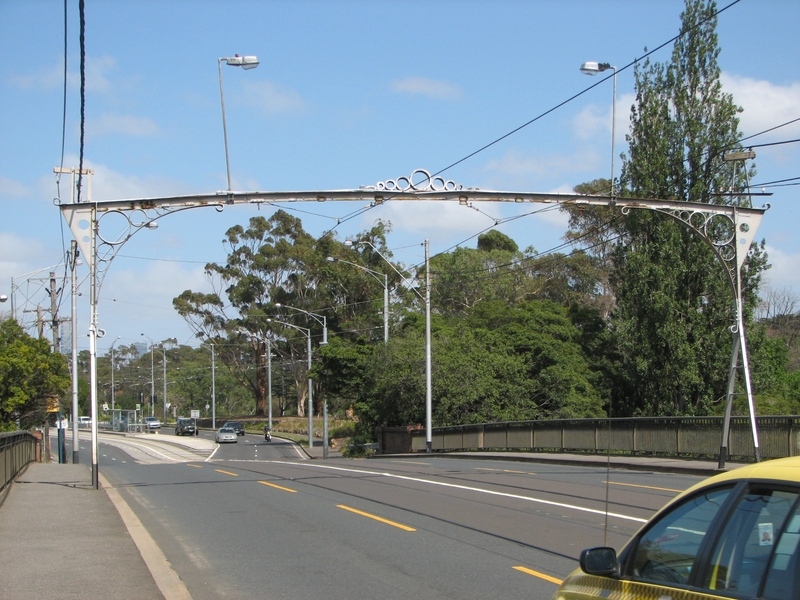

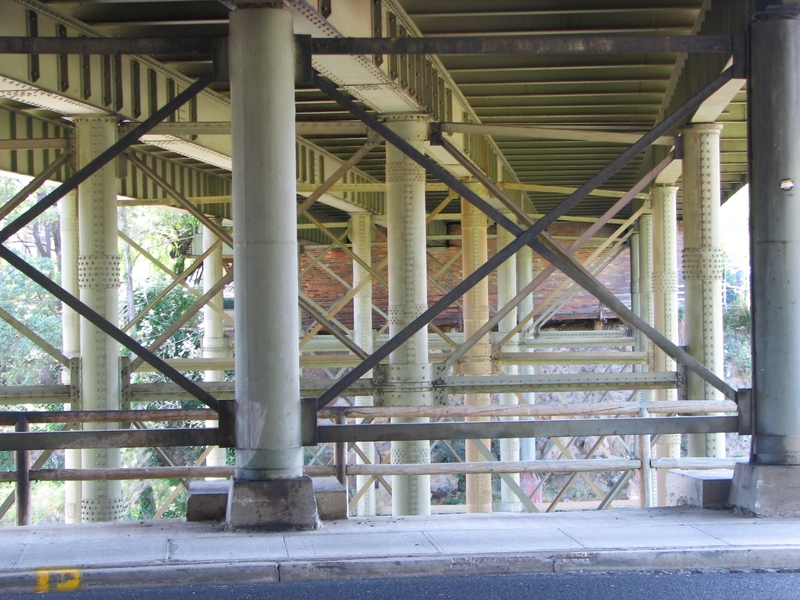
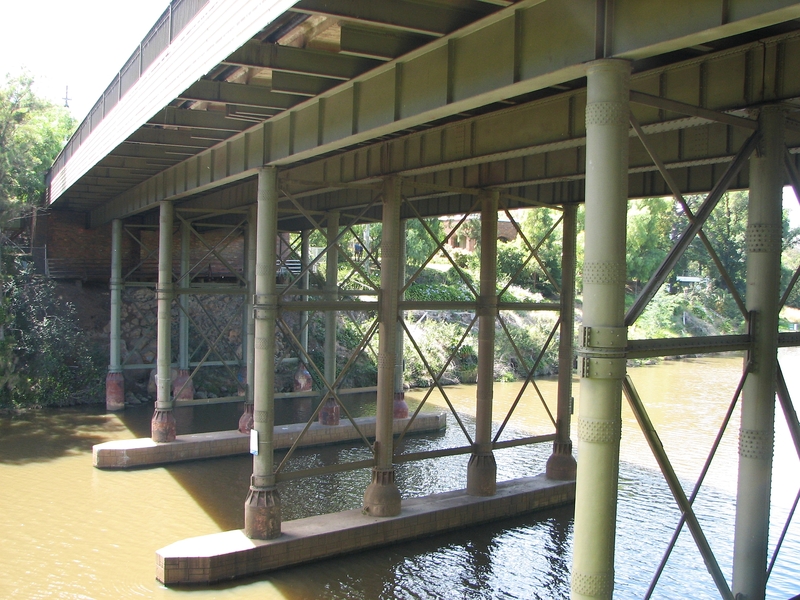
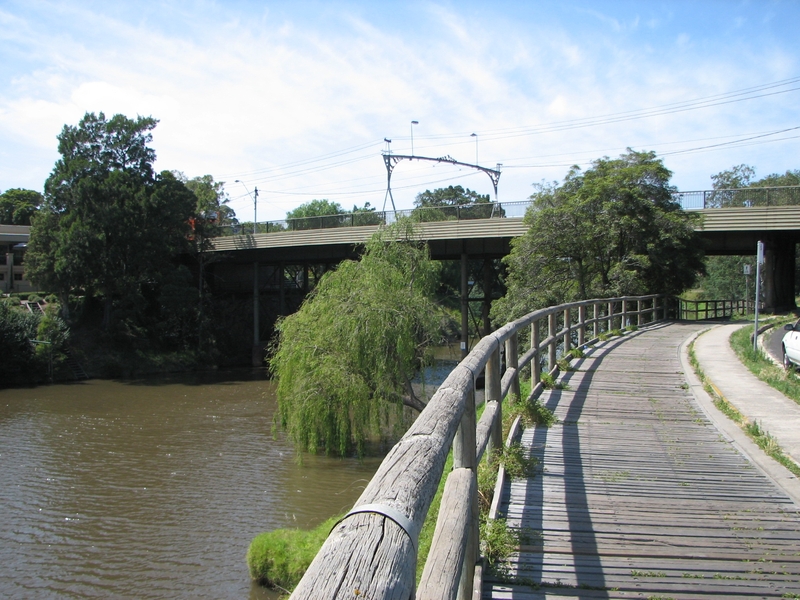
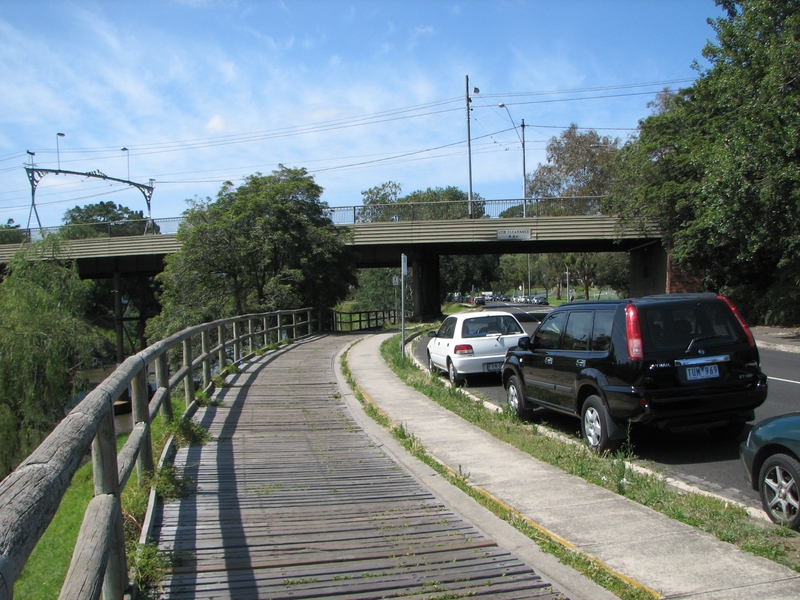
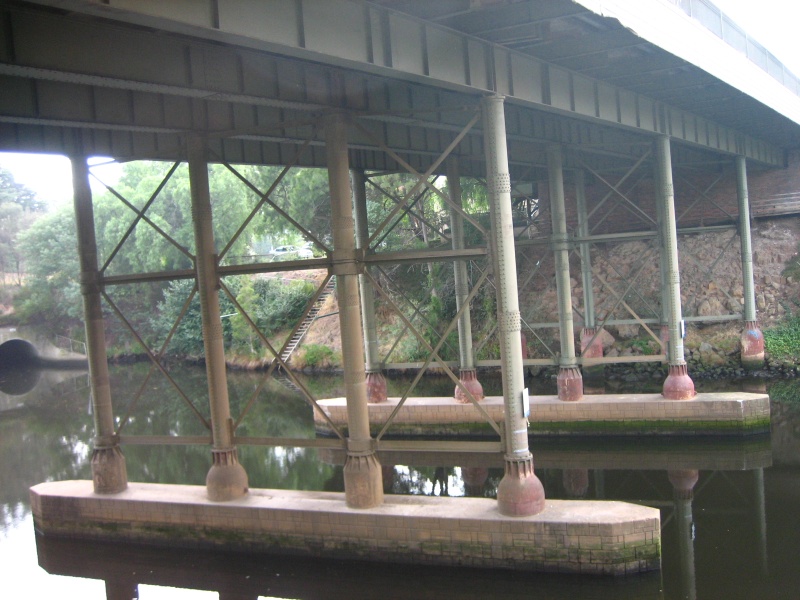
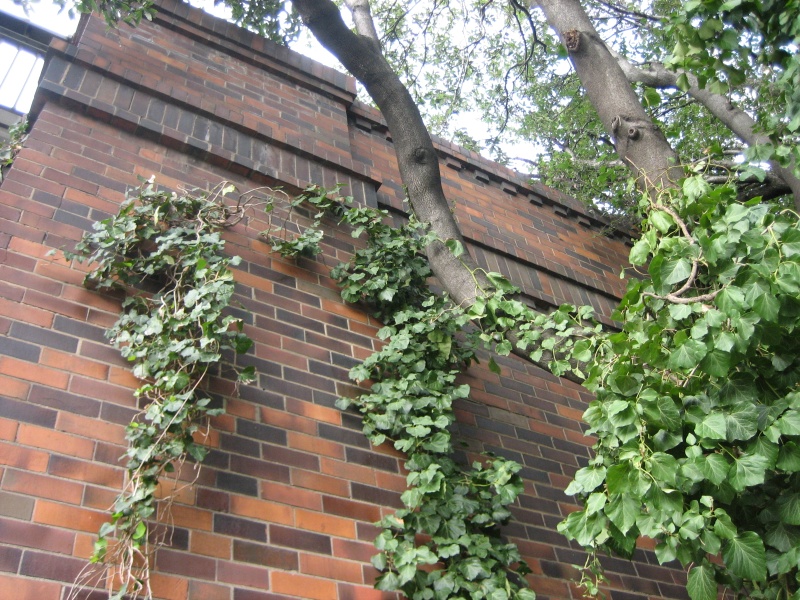
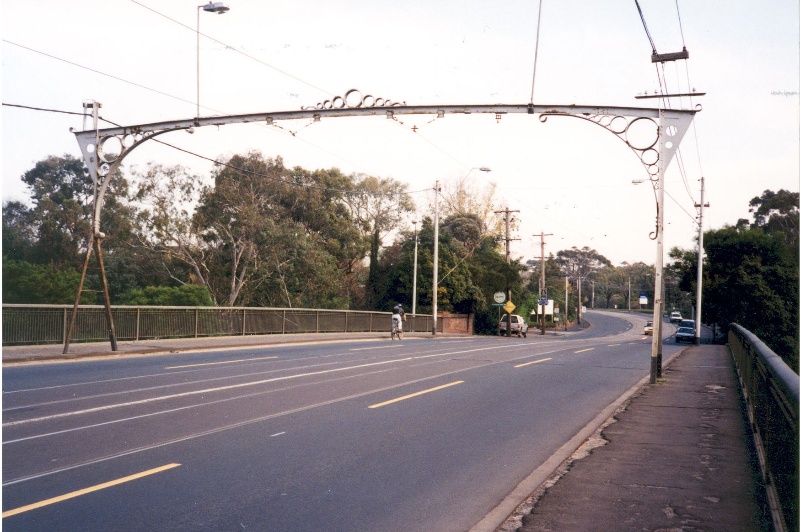

Statement of Significance
What is significant?
Wallen Road Bridge was designed by Temperley, Edwards and Jenkins and erected by the Johnson & Co Tyne Foundry, Melbourne in 1881. Known originally as Richmond Park Bridge, then Swan Street Bridge, the bridge was jointly funded by the Victorian government, the Borough of Hawthorn and the City of Richmond as a transport link between the industrial inner suburbs and the developing eastern suburbs. A design competition was held with the condition that the cost would be limited to £5000. The utilitarian engineering evident in bridges on this part of the Yarra contrasts with the aesthetic design of bridges along the Yarra closer to the city.
The bridge was strengthened and widened in 1916 for use by electric trams operated by the Hawthorn Tramways Trust, a municipal undertaking comprising the councils of Melbourne, Richmond, Hawthorn and Camberwell. This was an extension of its tramway connecting Hawthorn and Camberwell to the city. The work involved an additional row of piers on each side carrying riveted mild steel girders of 4 feet depth web plates. The size and shape of the pier cylinders matched the original form along with similar angle steel cross bracing. The brick abutments and wing walls were also reconstructed. In this period the Hawthorn Tramways Trust erected a decorative steel gantry over the roadway to carry overhead wires for the trams. The gantry, along with those on the Hawthorn Bridge (VHR H0050) which it closely resembles, was manufactured by H Wallace and Son Engineers.
In 1936-38 the bridge was again strengthened. At the same time an additional span was created on the Richmond side to accommodate the Yarra Boulevard which was constructed as part of an unemployment relief scheme during the Depression. Other works included the replacement of the deck with reinforced concrete on a series of RSJ beams over the 1916 piers. New mild steel RSJ girders replaced the 1916 riveted steel girders and a new six feet wide, cantilevered reinforced concrete footway built integral with the deck. The abutments and wing walls were again reconstructed in Hawthorn brick with the western abutment being relocated a further 30 feet from the river and a new pier of mild steel cylinders. Welding was used extensively for the new components and to reinforce the existing structure.
The bridge has cast iron and riveted wrought iron columns for the piers, riveted wrought iron box and plate girders for the main spans and a later 1938 reinforced concrete deck. The bridge has changed in appearance but retains its original basic form with the deep plate girder presenting a similar profile to the original box girders, the latter remaining as inner girders.
The ornamental tramway overhead gantry comprises A-framed steel uprights on either side of the road and a lightly curved main cross member of steel T section. The internal corners are decorated with curved steel strap to form spandrels which are in filled with decorative circles. The centre point of the cross member is decorated with an acroterion of steel strap in similar style. Small cantilevers on the outside carrying power lines are braced with a triangular steel web pierced with circular holes. Electric lights have been attached to the gantry.
How is it significant?
Wallen Road Bridge is of historical, scientific (technical) and aesthetic significance to the State of Victoria.
Why is it significant?
The Wallen Road Bridge is of historical significance as an important 19th century crossing of the Yarra River. Built to connect industrial inner Melbourne with the eastern suburbs, it reflects the industrial and suburban development of the 1880s boom period.
Wallen Road Bridge is of historical significance for its associations with the formative decades of Melbourne's electric tramway system. The 1916 modifications to the bridge and the ornamental tramway overhead gantry reflect the aspirations of the Hawthorn Tramways Trust, a significant municipal undertaking whose services contributed to the residential expansion of the eastern suburbs.
Wallen Road Bridge is of scientific (technical) significance as a rare example of a structure combining both cast iron columns and riveted box girders. It is the only surviving metal road bridge combining cast iron columns and box girders.
Wallen Road Bridge has the potential to educate in relation to engineering design and use of construction techniques and materials. The bridge demonstrates the progressive development of metal engineering technology over a period of 60 years, spanning the introduction of steel, welding, reinforced concrete and standard rolled beams, particularly with the extensive use of welding in the 1936-38 works.
The ornamental tramway overhead gantry is of aesthetic significance for its sophisticated early 20th century ornamental design, now relatively rare. As street furniture it demonstrates the high standard of infrastructure adopted by the Hawthorn Tramways Trust.
-
-
WALLEN ROAD BRIDGE - Plaque Citation
Wallen Road Bridge, completed in 1881, was an important transport link between the industrial inner suburbs and the developing eastern suburbs. The 1916 overhead tram gantry reflects the formative decades of electric tramway development in Melbourne.
WALLEN ROAD BRIDGE - Permit Exemptions
General Exemptions:General exemptions apply to all places and objects included in the Victorian Heritage Register (VHR). General exemptions have been designed to allow everyday activities, maintenance and changes to your property, which don’t harm its cultural heritage significance, to proceed without the need to obtain approvals under the Heritage Act 2017.Places of worship: In some circumstances, you can alter a place of worship to accommodate religious practices without a permit, but you must notify the Executive Director of Heritage Victoria before you start the works or activities at least 20 business days before the works or activities are to commence.Subdivision/consolidation: Permit exemptions exist for some subdivisions and consolidations. If the subdivision or consolidation is in accordance with a planning permit granted under Part 4 of the Planning and Environment Act 1987 and the application for the planning permit was referred to the Executive Director of Heritage Victoria as a determining referral authority, a permit is not required.Specific exemptions may also apply to your registered place or object. If applicable, these are listed below. Specific exemptions are tailored to the conservation and management needs of an individual registered place or object and set out works and activities that are exempt from the requirements of a permit. Specific exemptions prevail if they conflict with general exemptions. Find out more about heritage permit exemptions here.Specific Exemptions:General Conditions: 1. All exempted alterations are to be planned and carried out in a manner which prevents damage to the fabric of the registered place or object. General Conditions: 2. Should it become apparent during further inspection or the carrying out of works that original or previously hidden or inaccessible details of the place or object are revealed which relate to the significance of the place or object, then the exemption covering such works shall cease and Heritage Victoria shall be notified as soon as possible. Note: All archaeological places have the potential to contain significant sub-surface artefacts and other remains. In most cases it will be necessary to obtain approval from the Executive Director, Heritage Victoria before the undertaking any works that have a significant sub-surface component. General Conditions: 3. If there is a conservation policy and plan endorsed by the Executive Director, all works shall be in accordance with it. Note: The existence of a Conservation Management Plan or a Heritage Action Plan endorsed by the Executive Director, Heritage Victoria provides guidance for the management of the heritage values associated with the site. It may not be necessary to obtain a heritage permit for certain works specified in the management plan. General Conditions: 4. Nothing in this determination prevents the Executive Director from amending or rescinding all or any of the permit exemptions. General Conditions: 5. Nothing in this determination exempts owners or their agents from the responsibility to seek relevant planning or building permits from the responsible authorities where applicable. Regular Site Maintenance : The following site maintenance works are permit exempt under section 66 of the Heritage Act 1995: a) regular site maintenance provided the works do not involve the removal or destruction of any significant above-ground features or sub-surface archaeological artefacts or deposits; b) the maintenance of an item to retain its conditions or operation without the removal of or damage to the existing fabric or the introduction of new materials; c) cleaning including the removal of surface deposits, organic growths, or graffiti by the use of low pressure water and natural detergents and mild brushing and scrubbing; d) repairs, conservation and maintenance to plaques, memorials, roads and paths, fences and gates and drainage and irrigation. e) the replacement of existing services such as cabling, plumbing, wiring and fire services that uses existing routes, conduits or voids, and does not involve damage to or the removal of significant fabric. Note: Surface patina which has developed on the fabric may be an important part of the item's significance and if so needs to be preserved during maintenance and cleaning. Note: Any new materials used for repair must not exacerbate the decay of existing fabric due to chemical incompatibility, obscure existing fabric or limit access to existing fabric for future maintenance. Repair must maximise protection and retention of fabric and include the conservation of existing details or elements. Public Safety and Security : The following public safety and security activities are permit exempt under section 66 of the Heritage Act 1995, a) public safety and security activities provided the works do not involve the removal or destruction of any significant above-ground structures or sub-surface archaeological artefacts or deposits; b) the erection of temporary security fencing, scaffolding, hoardings or surveillance systems to prevent unauthorised access or secure public safety which will not adversely affect significant fabric of the place including archaeological features; c) development including emergency stabilisation necessary to secure safety where a site feature has been irreparably damaged or destabilised and represents a safety risk to its users or the public. Note: Urgent or emergency site works are to be undertaken by an appropriately qualified specialist such as a structural engineer, or other heritage professional. Signage and Site Interpretation : The following Signage and Site Interpretation activities are permit exempt under section 66 of the Heritage Act 1995, a) signage and site interpretation activities provided the works do not involve the removal or destruction of any significant above-ground structures or sub-surface archaeological artefacts or deposits; b) the erection of non-illuminated signage for the purpose of ensuring public safety or to assist in the interpretation of the heritage significance of the place or object and which will not adversely affect significant fabric including landscape or archaeological features of the place or obstruct significant views of and from heritage values or items; c) signage and site interpretation products must be located and be of a suitable size so as not to obscure or damage significant fabric of the place; d) signage and site interpretation products must be able to be later removed without causing damage to the significant fabric of the place; Note: The development of signage and site interpretation products must be consistent in the use of format, text, logos, themes and other display materials. Note: Where possible, the signage and interpretation material should be consistent with other schemes developed on similar or associated sites. It may be necessary to consult with land managers and other stakeholders concerning existing schemes and strategies for signage and site interpretation.
Roadworks: The following works to the road portion of the place are permit exempt: a) The resurfacing of the road and maintenance to the road surface; b) lane marking; c) erection of speed and traffic signs. The installation of traffic lights may be permit exempt if the Executive Director is satisfied that the heritage significance and the significant fabric of the place will not be adversely affected by such an installation. Any proposal to undertake such work should be submitted to the Executive Director for approval.
Minor Works : Note: Any Minor Works that in the opinion of the Executive Director will not adversely affect the heritage significance of the place may be exempt from the permit requirements of the Heritage Act. A person proposing to undertake minor works may submit a proposal to the Executive Director. If the Executive Director is satisfied that the proposed works will not adversely affect the heritage values of the site, the applicant may be exempted from the requirement to obtain a heritage permit. If an applicant is uncertain whether a heritage permit is required, it is recommended that the permits co-ordinator be contacted.
WALLEN ROAD BRIDGE - Permit Exemption Policy
It is the purpose of the permit exemptions to enable routine maintenance and repairs which do not damage the significant fabric of the bridge and gantry, or diminish their cultural significance. Any proposed works that would replace or alter the fabric of the structures, or adversely affect any understanding of them, should be avoided. A permit will be required for any substantial alterations.
Alterations and replacement of wiring provided no permanent alterations are made to the gantries.
-
-
-
-
-
FORMER INVERGOWRIE LODGE
 Victorian Heritage Register H0517
Victorian Heritage Register H0517 -
FORMER BRIDGE HOTEL
 Victorian Heritage Register H0449
Victorian Heritage Register H0449 -
INVERGOWRIE
 Victorian Heritage Register H0195
Victorian Heritage Register H0195
-
'ELAINE'
 Boroondara City
Boroondara City -
-oonah
 Yarra City
Yarra City -
..eld House
 Yarra City
Yarra City
-
-












